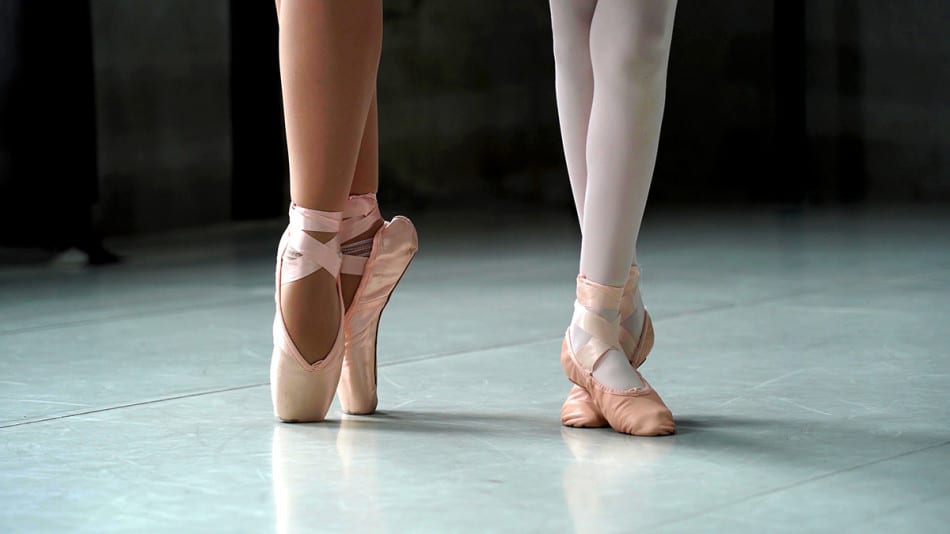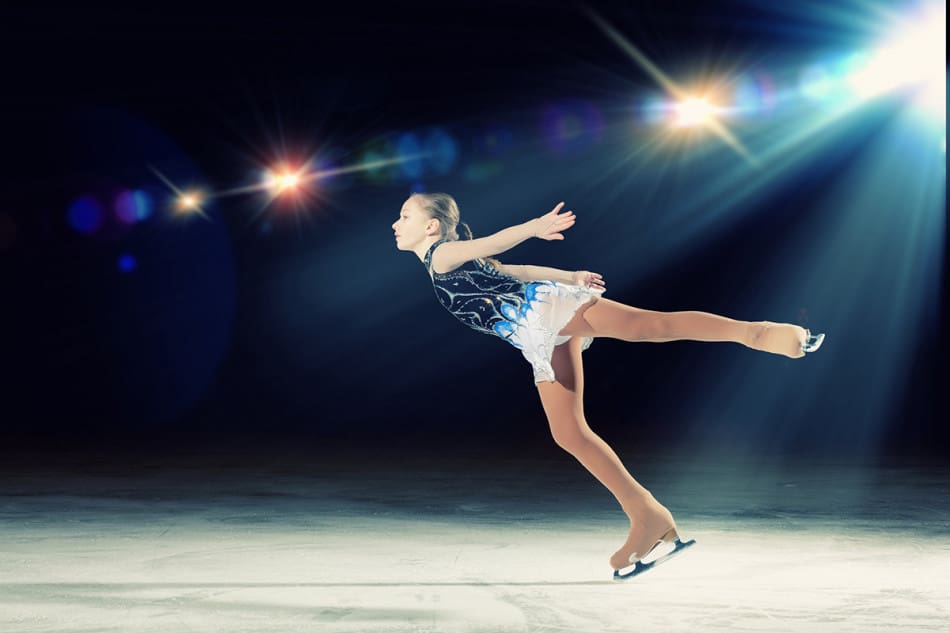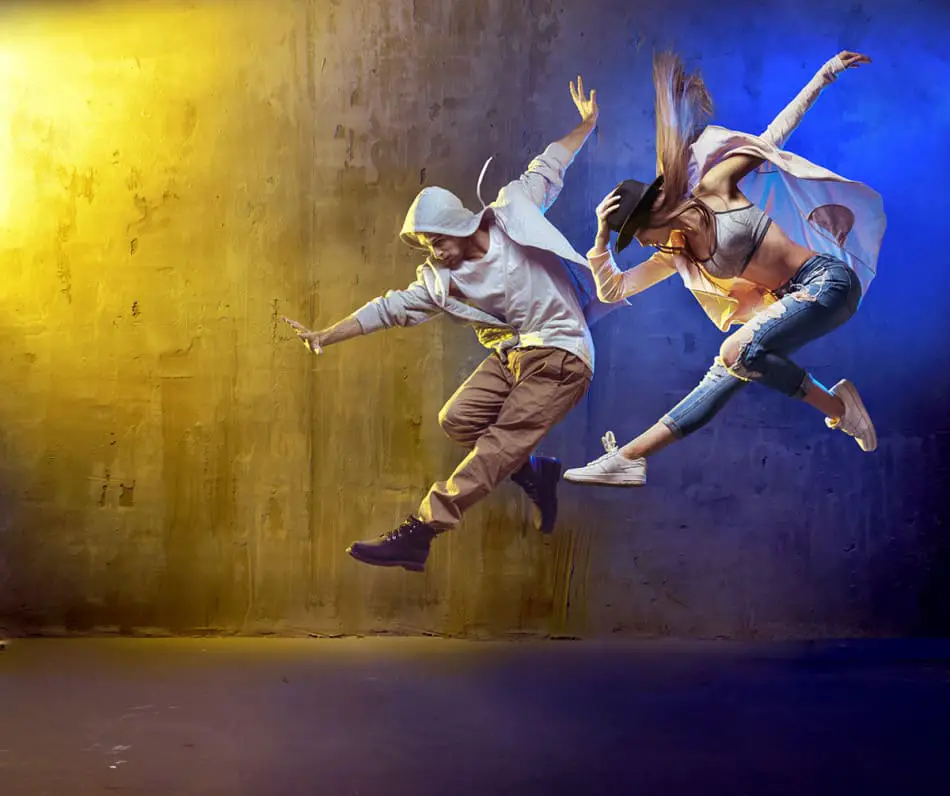Today, ballet is more accessible than ever. With virtual classes, on-demand access to world-class training, YouTube videos, and several ballet-related books, it’s easy to find quality training that you can teach yourself. But do these methods work?
Here’s how to self-teach ballet:
- Find a space to practice.
- Understand turnout.
- Learn the five feet and arm positions in ballet.
- Practice the essential ballet barre exercises.
- Complete center practice.
If you’ve ever wanted to learn how to ballet, you are in the right place. Keep reading, then practice until you get it just right.
1. Find a Space To Practice
Ballet classes consist of two parts: barre and center.
Barre exercises are fundamental for ballet class, as you use the barre for balance and support to prepare you for dancing without the barre. The movement progresses from exercising one body part to a full-body workout at the end of the barre.
During center, you dance without the barre and repeat some of the same exercises performed at the barre with the addition of jumps and turns.
With that being said, the first thing you need to teach yourself ballet is an open space and an object you can use as a ballet barre. You can use a counter, chair, wall, or anything sturdy that you can hold.
Ideally, you will have a flat, smooth surface to dance on, like kitchen tile or hardwood floors, or you can purchase Marley flooring, which dancers use in a ballet studio. Ideally, you would have access to wall mirrors so that you can see yourself to know if your form is correct or if you need to improve on your form.
2. Understand Turnout
A key characteristic of ballet is the legs’ outward rotation at the hip socket, called “turnout.” Turnout must be present in every exercise and is the unique and critical component of ballet dance.
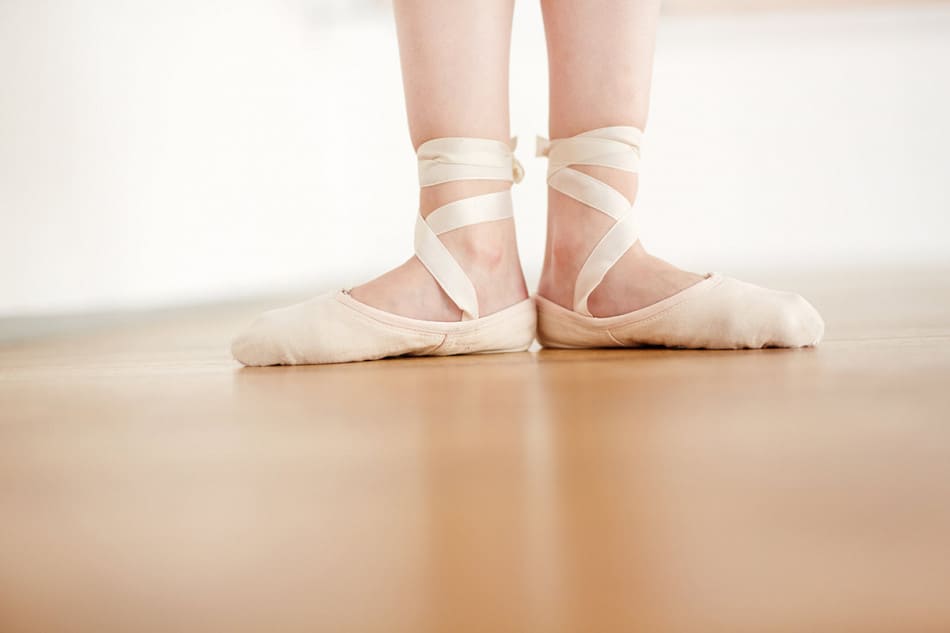
To turn your legs out:
- Start with your feet together, pointing to the front.
- Rotate your feet away from your body while your heels stay together.
- Aim to keep your legs rotated during every exercise.
3. Learn the Five Feet and Arm Positions in Ballet
Learning ballet begins with knowing the five feet and arm positions:
- First: This is when your heels are together and toes are pointed outward.
- Second: Your feet are spread about a foot width apart with toes pointed outward.
- Third: This position is when one foot is in front of the other with the heel of one foot touching the inside arch of the other foot.
- Fourth: One leg is crossed in front of the other with both feet pointing outward.
- Fifth: Your feet are pointed outward with the heel of one foot in front of the toe of another foot.
Ballet has arm positions that match the feet positions.
- In the first position, the arms are in a large, rounded circle in front of you.
- In the second position, the arms stay rounded but extend out to your side.
- The third position brings one arm back to the first position while the other arm remains in the second position.
- In the fourth position, one arm is in the second position, and the other is round above your head.
- In the fifth position, both arms are round above your head.
4. Practice the Essential Ballet Barre Exercises
Each ballet class at the barre follows the same basic structure:
- Pliés
- Tendus
- Dégagés
- Rond de jambe à terre
- Fondu
- Petit battement
- Frappé
- Ron de jambe en l’air
- Développé
- Grand battement
Understanding each of these elements will help prepare you for center practice without the barre.
Ballet Balances
During barre, you perform a series of balances, preparing you for pirouettes in the center. These balances usually follow each exercise, and they progress from one foot to two feet.
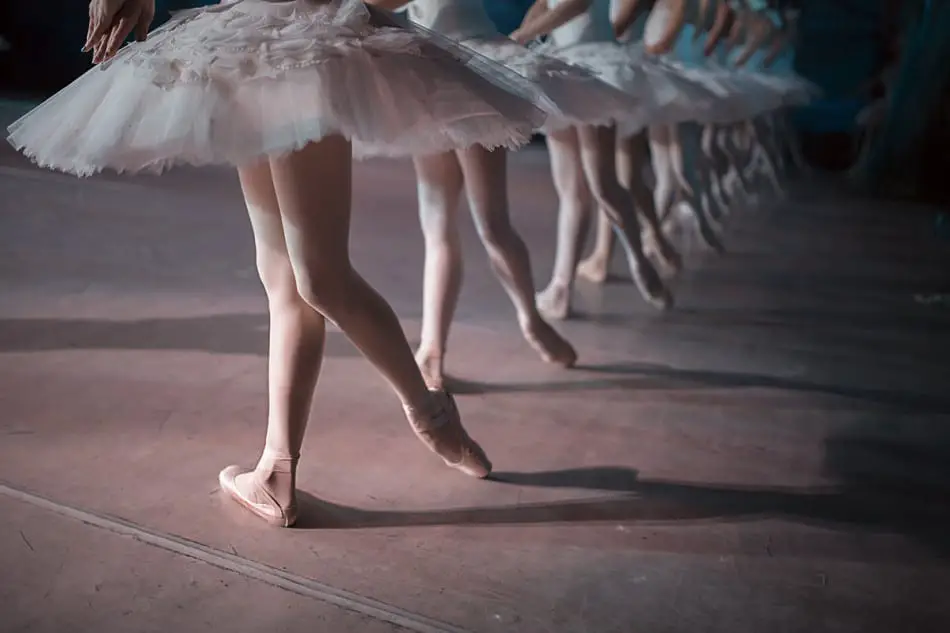
The first balance is in the first position. You will start with your feet in the first position and rise on your tiptoes (demi-pointe). Hold your arms in the first position and try to balance without your ankles wobbling.
The second balance in ballet class is sus-sous and is a balance on two feet. Start in the fifth position and rise to demi-pointe. Slide your front foot right in front of your back foot while keeping your legs and feet rotated outward.
Your knees should touch, and your feet might over cross slightly.
The following balance is cou-de-pied, in which one leg is straight, the other leg is bent, and your knee is pointing to the side. Your foot is pointed and touching the front of your ankle. Retiré is like a cou-de-pied, except your toe is at the front of your knee instead of at your ankle.
General Notes for Barre
Ballet barre always begins with your left hand on the barre.
You will always do both sides of a movement, starting with the left hand on the barre and then turning to place the right hand on the barre and doing the exercise with the other leg.
En Croix is a popular term in ballet that means “in the shape of a cross.” Most tendu, dégagé, fondu, frappé, développé, and grand battement exercises will be performed en croix, meaning you’ll do the movement to the front, side, back, and then to the side again.
Pliés
Pliés and tendus are the most fundamental parts of ballet technique. To plié is to bend the legs, and to tendu is to stretch them. Every movement in ballet stems from these two acts.
To plié, start in any five-foot positions and bend your legs, making sure your knees point outward. Pliés have two versions: demi (small) and grand (large). Your heels stay on the floor in demi plié. In a grand plie, bend your legs far enough so that your heels come off the floor. The only exception is the second position, where your heels stay on the floor in both demi and grand plié.
Tendus, Dégagés, and Rond de jambes
Tendus are stretching the leg away from the body. Your legs should stay rotated outward, and your feet pointed, but your feet should not leave the ground. You can do a tendu from the first, third, or fifth position.
Check out this video for a detailed demonstration of tendus:
Dégagés are the same as tendus, except they extend off the floor and a maximum of 45° into the air. To do a rond de jambe, make a circle with your leg on the ground. Your leg stays straight in the tendu position, and you essentially trace a half-circle with your feet on the floor.
Fondu
Fondu involves pliéing and stretching on one leg while the other bends and extends to a dégagé position or higher. You can perform a fondu with your feet flat on the ground or on demi-pointe.
For detailed instruction on how to do a fondu, check out this video:
Petit battement
Petit battement is a tiny and fast movement designed to work your leg’s outward rotation. To do this, bend your outside leg and place your toe pointed beside your ankle. Your leg should make a half diamond shape.
Keeping the top of your leg still, put your foot at the back of your ankle. Keep your leg rotated to the side. Repeat moving your foot back and forth.
Frappe
Frappe means to strike and involves striking the ball of your foot on the ground while you extend it outward to a dégagé position. Bend your outside like to form a half diamond while keeping your inside (supporting) leg straight. Instead of pointing your toe beside your ankle, flex it and then strike the ground while extending your foot out.

Repeat this en croix.
Rond de jambe en lair
Rond de jambe en lair is another exercise designed for strengthening your rotation. Extend your outside leg to the side at a 90° angle. Bend your lower leg and bring it into your knee in a retiré position. Then, without moving your upper thigh, slowly rotate your lower leg in a small half circle as you extend it back out to a 90° angle.
This exercise can be tricky to perform. Watch this video to help you accomplish rond de jambe en lair:
Développé
Développé involves slowly lifting your leg high into the air and controlling its descent. To do this:
- Start in the fifth position and lift your outside leg into retiré.
- While keeping your supporting leg straight, extend your outside leg to front to attitude, a bent leg position in the air. The inside of your heel should be pointing to the ceiling while your knee points outward, keeping your legs rotated.
- Straighten your leg in the air, then slowly lower it to the ground.
Grand battement
Grand battement follows développé and is similar to a dégagé, except the object is to kick your leg as high as possible while keeping both legs straight. Starting from the fifth position, brush your outside leg front, aim to swing it as high as possible, and return your leg to the fifth position. Repeat en croix.
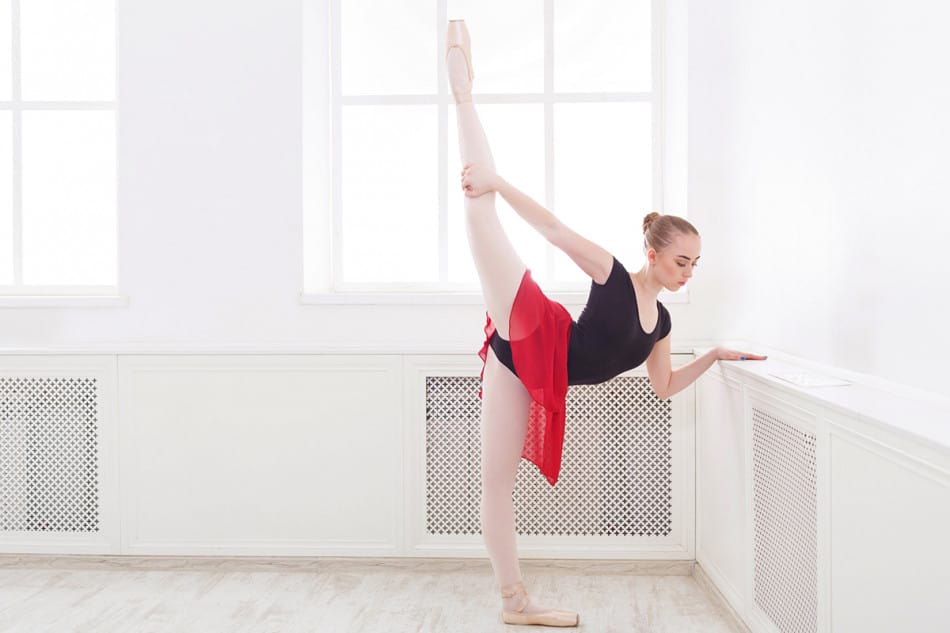
5. Complete Center Practice
During center practice, you will repeat a few barre exercises, such as tendus, développé (or adagio), or fondu. These exercises in the center are to test your balance and prepare you for turns or jumps.
Pirouettes
The most common turn in ballet dance is the pirouette. A pirouette is essentially a rotation while in retiré. Place your feet in the fourth position and your arms in the third position. Plié, and then relevé to demi-pointe while your back leg comes to retiré.
Bring your arms to the first position and turn your body so that you spin in retiré.
Use your head to spot the front, which means keeping your eyes fastened to a specific spot for as long as you can before turning your head at the last minute. Spotting helps you maintain your balance and keeps you from getting dizzy while doing multiple turns.
A pirouette can be very challenging at first, so it’s best to practice balancing in the retiré position on demi-pointe before adding an actual turn.
Traveling Steps
You might do traveling steps such as a waltz or balancé step during center while combining a pirouette or another type of rotation. Other popular turns include piqué, en dedan pirouettes, chaîné, attitude turns, arabesque turns and more.
To learn more about the different turns in ballet, check out this video:
Allegro
After turning and doing traveling steps, it’s time to jump. Jumps in ballet class are called allegro. The jumping portion of a ballet class starts with a warm-up jump, which will warm up the lower leg and ankles in preparation for more extensive and complicated jumps landing on one leg.
Most warm-up jumps start in the first position and jump in the first, second, fourth, and fifth positions.
One standard warm-up jump is échappé. Start in the fifth position. Jump open and land with your legs in the second position. From there, jump back to the fifth position, this time closing the other leg in front.
Another famous warm-up jump is Changement. This jump begins in the fifth position. Jump straight into the air and land with the other foot in front.
Following warm-up jumps is petit allegro with exercises such as assemblé and jeté. To perform an assemblé:
- Start in the fifth position.
- Brush the back leg to a dégagé side.
- Jump up and close the extended leg to sus-sous in the air, making sure that leg is now front.
- Land in the fifth position.
- Repeat on the other side.
A jeté is similar to an assemblé, except that instead of landing on two feet in the fifth position, you land on one foot with the back leg bent in coup-de-pied derrière (behind).
Following jeté are bigger, traveling jumps called grand allegro—large, advanced jumps such as pas de chat, sissonne, grand saut de chat, tour jeté, and more.
Watch this video for a step-by-step guide of how to perform grand allegro:
Final Thoughts
Ballet is an art form full of rich history that requires intense dedication to be successful. However, it is also a fun style of dance that many people enjoy recreationally. This guide gave you a basic rundown of a standard ballet class that you could do independently.
However, there are many nuisances, complications, and exceptions that an experienced teacher can expound on in a class.

